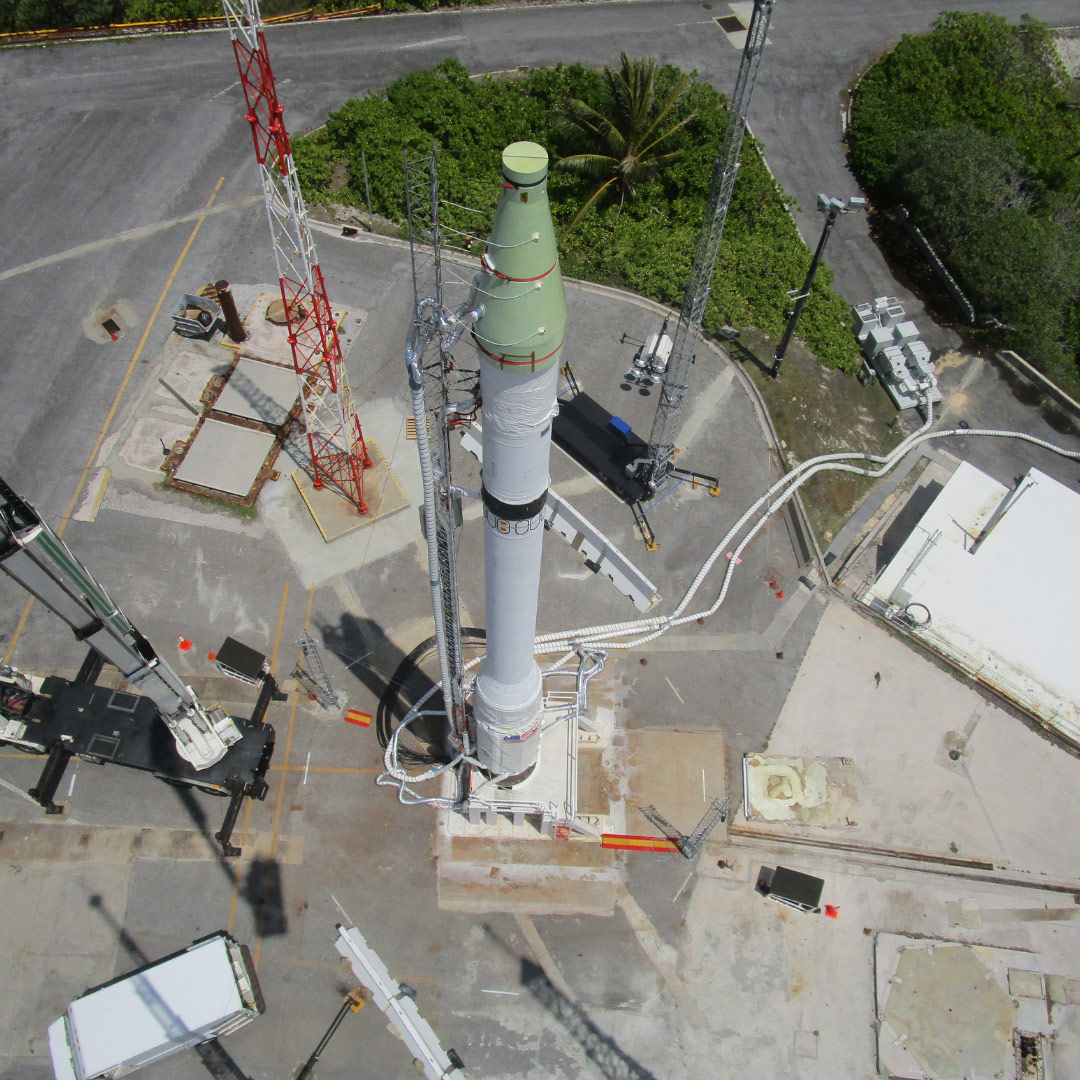Simulating Long-Range Threats
Target vehicles play a crucial role in refining the nation’s missile defense
By Presley Price
The U.S. conducts a variety of missile defense demonstrations each year using live target vehicles to collect critical data and test performance of the deployed and developing systems designed to defend the nation. These flight tests are complex undertakings that include land, sea, air and space assets as well as a significant number of personnel. The target vehicle is often one part of a much larger exercise and must work perfectly when called upon to enable test objectives and avoid expensive delays.
”Our Targets teams have one of the most difficult jobs in the industry. We task them with building complete missile systems that emulate the advanced threats we face based on intelligence alone. Building target vehicles is another form of rocket design that includes simulating varying attack ranges, defining their trajectories and tailoring the payloads they carry,” said Robin Heard, director, Northrop Grumman’s targets operating unit.

Modifying Proven Systems to Boost Performance
The Intercontinental Ballistic Missile (ICBM) target is a three-stage, threat-representative ballistic missile designed to simulate long-range missile attacks and verify the efficacy of the Ground-based Midcourse Defense System and Aegis Ballistic Missile Defense System. Northrop Grumman has delivered 25 ICBM and Intermediate Range Ballistic Missile (IRBM) targets to date, supporting 10 successful end-to-end missile defense demonstrations since 2011.
Northrop Grumman recently completed the Critical Design Review of the redesigned ICBM target after modifying the vehicle to enhance performance and expand its capability. The new design replaces the vehicle’s heritage Trident 1 C4 first stage motor with the SR119 solid rocket motor.
Trident 1 is a retired submarine-launched ballistic missile initially deployed in 1979, succeeding the Polaris and Poseidon missiles as the Navy’s primary nuclear deterrent. Because the C4 motor was nearing the end of its service life, Northrop Grumman and MDA worked together to identify the SR119 motor as the best replacement to ensure target longevity with the added benefit of providing extended range, lift capability and payload capacity to highly demanding ICBM target missions.
Finding the Right Balance
Initially designed and fielded as a second stage motor on the LGM-118 Peacekeeper ICBM, Northrop Grumman modified the decommissioned SR119 motor to serve as a first stage motor for the first time. The new design also moves the first stage avionics from the motor to the interstage, enabling a more streamlined integration process and improved vehicle end-to-end testing capability.
“It’s about finding the right balance of affordability and innovation – combining capable, government-owned surplus motors, state-of-the-art avionics and sophisticated payloads to accurately simulate threats,” said Eric Draves, director of intermediate and intercontinental ballistic missile target programs, Northrop Grumman. “As we develop new systems and modify our proven vehicles, we factor in capacity to evolve and expand performance based on what our customers need. We’re able to leverage our unmatched solid rocket motor expertise, common avionics architecture and adaptable vehicle enhancement kits to quickly and cost effectively tailor target vehicles to meet any mission.”
The Perfect Combination of Old and New
The combination of decommissioned ICBM motors and proven, advanced avionics hardware is one of Northrop Grumman’s unique strengths from experience spanning several decades. Similarly, the Minotaur product line uses motors from decommissioned Minuteman and Peacekeeper missiles. The technology development across programs can be integrated into different configurations and be successfully launched on target vehicles, missile defense interceptors and other space launch applications.
With a robust supply chain for hardware that is used across Northrop Grumman’s expansive portfolio of launch vehicles, it’s easy to tap into available inventory for components that are needed to fly any kind of multistage rocket: separation systems, valves, safety equipment, safe and arm devices, and separation joints to name a few. They can be pulled right off the shelf and used across the portfolio of launch vehicles to meet customers’ need for shorter lead times with agility and confidence. The team has also developed a flexible avionics architecture called Modular Avionics Control Hardware (MACH), which can be quickly configured to meet the demands of many different launch vehicle control systems without the need for time consuming development efforts.
To further increase speed and flexibility, Northrop Grumman’s targets portfolio consists of 10 basic vehicle configurations and a variety of plug-and-play enhancement kits that can be used to upgrade the selected configuration to meet specific mission requirements.
Leaning in with Digital Technologies
The redesigned ICBM target leveraged virtual and augmented reality to animate and validate the vehicle’s new integration and field operations, known as pathfinding. Pathfinding operations provide a low risk setting to fully vet new integration, stacking and test operations on inert hardware. Virtually simulating the vehicle’s pathfinding operations further buys down risk, enhances end-to-end test capability and optimizes processes to deliver the enhanced capability with agility.
“This is the first time we’ve been able to fully animate a target’s pathfinding using advanced virtual reality, which has given our team a greater understanding of its operational details and the opportunity to identify any potential risks ahead of the actual stacking and integration,” said Draves.
The redesigned ICBM target is slated to take its first flight in 2025 in support of a missile defense test and will be compatible with advanced front ends to simulate sophisticated long-range ballistic missile threats.
“Target vehicles play a crucial role in refining the nation’s missile defense and preparing the warfighter to negate the threats they’re likely to encounter operationally. By designing high-performing targets, we’re helping equip our Armed Forces to defeat even the most challenging threats,” said Draves.